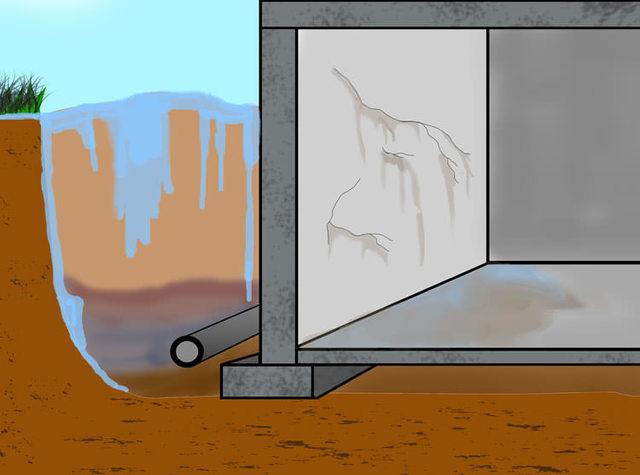How Hydrostatic Pressure is Affecting your Basement or Crawl Space.
There are a couple of ways in which water can make its way into a crawl space or basement. Possibly the most common instance, however, is through hydrostatic pressure. Hydrostatic pressure refers to pressure put on foundation walls produced by water saturated soil in the backfill area of a home. The pressure can become so great that the water particles migrate through the foundation walls causing a wet crawl space or basement.

To prevent this, most homes have some type of footing drain installed along the exterior of the foundation when they’re built. But because the drains are installed down in mud zones, they are easily clogged by silt, sediment or roots. Once those drains fail,the water in the ground builds up around the foundation, almost like a moat. Trying to access and repair these drains can be difficult and costly, especially if the ground above is established with beautifications like shrubbery, flower beds or a patio. This unfortunate situation is common because so many home foundations are constructed deep down into the soil where a lot of impermeable clay or hardpan can be found.
The number one mistake people make trying to keep their crawl space or basement dry, is assuming the water can be prevented from the outside. Concrete foundations are porous and concrete foundations crack; especially in the northwest where earthquakes and settlement issues are common. There are cold joints, rock pockets and all sorts of other imperfections that make concrete walls particularly hard to seal up. Interior applications of products like waterproofing paints, sealants and epoxies can offer the homeowner a short-term solution, but in time, water will always make its way back in.
In wet areas, it’s virtually impossible to prevent water from coming into a crawl space or basement. According to Rainy Day Basement Systems owner, Dan Malsch; “the most effective way to control the hydrostatic pressure of a crawl space or basement is to have a mechanical system in place that is serviceable and maintainable.” An interior drainage system that has an inspection ports, like our WaterGuard, is the perfect solution for basement drainage. Like many of our drainage systems, WaterGuard has a special wall flange that creates a neat space between the floor and the wall to drain any wall seepage. It does this without allowing any dirt or debris from the ground to enter and potentially clog it.
Another valuable component for keeping a basement or crawl space dry is a sump pump. The pump discharges all the captured water and is crucial for lowering hydrostatic pressure. Every situation is different and the amount of water seepage determines the extensiveness of the necessary system for each case.
If you are experiencing water in your basement or crawl space and would like more information, contact us at 1-360-435-6992 or Click Here to request a free estimate!
